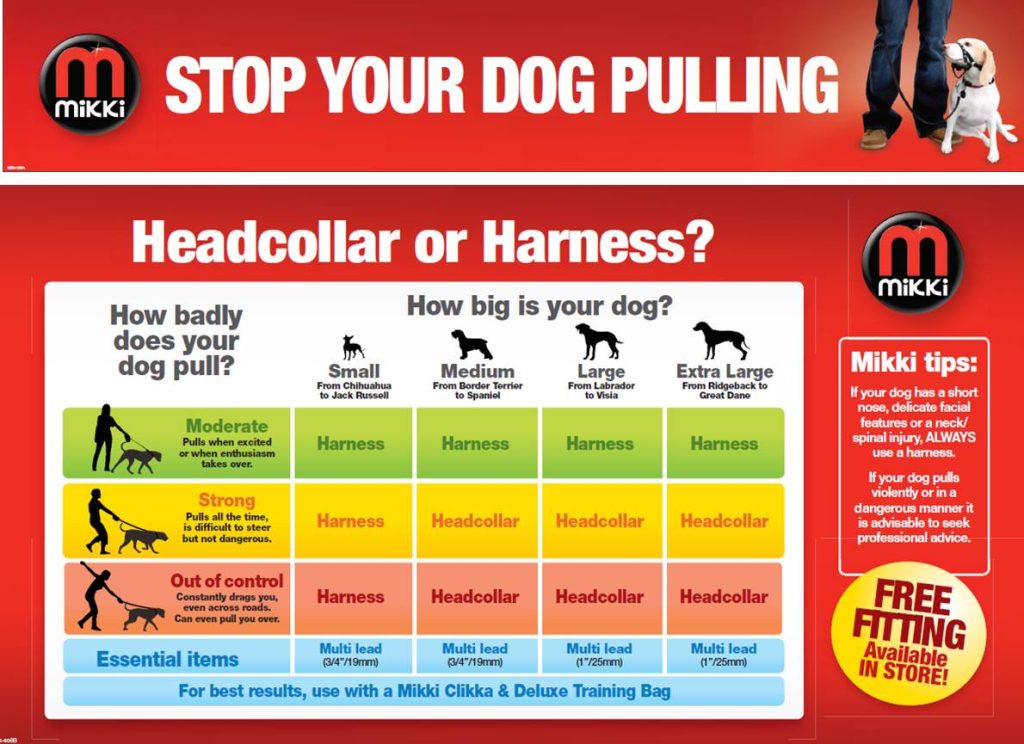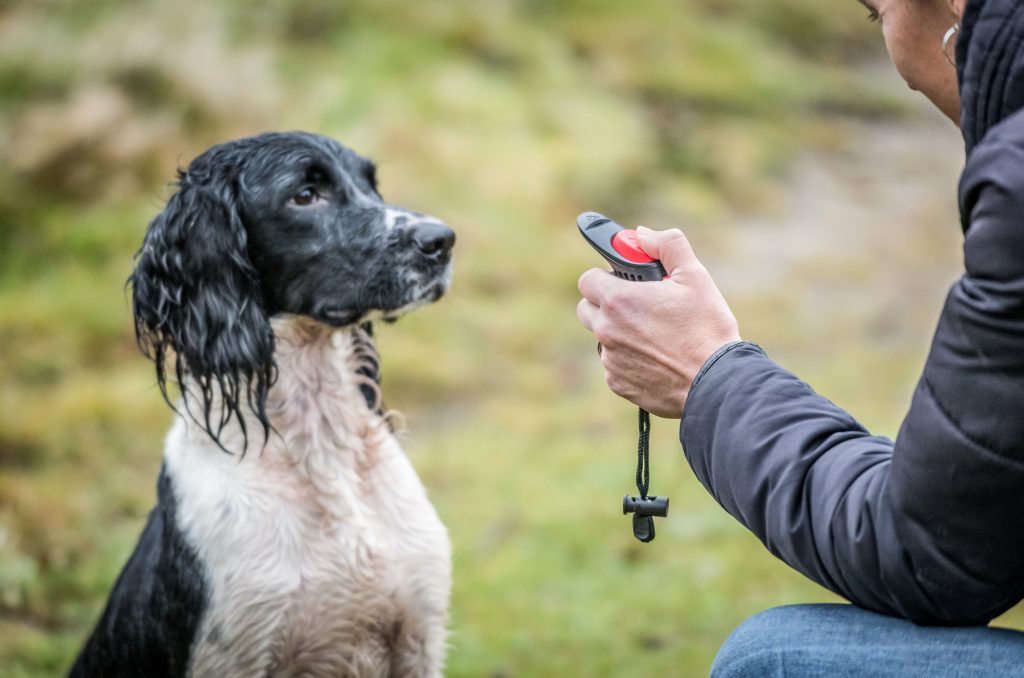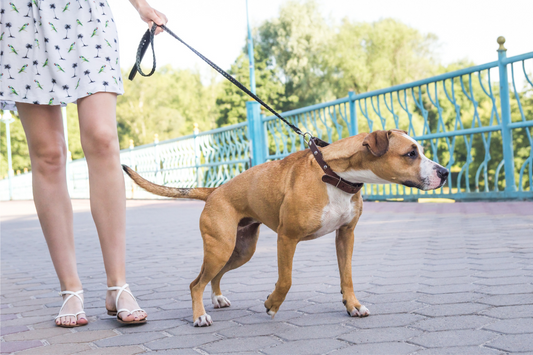Walking your dog, is a walk in the park – right?
Maybe the dream you had of owning a dog, included relaxing walks and enjoying time outside together – but the reality isn’t quite matching up. Unfortunately, most dogs don’t come pre-programmed how to walk and behave nicely on lead, especially in environments that are super exciting to them – the great outdoors! It’s our job to teach them good walking etiquette so we can enjoy our time out together.
Common walking issues include:
Pulling on lead
Dogs don’t know that they should walk politely next to you. They see a big world in front of them and are eager to get out and explore it! The first time your dog succeeds in pulling on the lead they are rewarded. This of course is done unintentionally by you, but the dog soon learns that pulling gets them where they want to go more quickly. This behaviour is then associated with a payment – ‘I pull; I get to go where I want to go!’ Bad habits then quickly become routine behaviour.
Walk this way
What dogs rehearse they become, so if your dog is allowed to practice pulling on lead, the more they will do it – it won’t resolve itself with age or time – only the correct management and training will see good lead walking results. Managing your dog while they learn to walk nicely can be made easier by using a headcollar or anti-pull harness. These give you more control and help you prevent your dog rehearsing behaviours that you are wanting to change.
But which is best for you and your dog?

How do they work?
Our headcollars and harnesses work with your dog’s natural reflex system to help discourage them from pulling and come with flexible adjustments to allow you to tailor the sizing to get the best fit for your dog.
If your dog pulls strongly, it may also be useful to look at changing your standard lead to one that’s more versatile. A Multi-Lead can be used to connect to two areas of your dog’s walking apparel such as their headcollar and collar or front and back of their harness – this can give you extra control and manoeuvrability when out walking.
Top Tips:
Start slowly
To get you dog used to wearing a new training aid, particularly those that feel very different such as a headcollar, introduce them to it slowly so they have a positive experience and are happy wearing it.
Build it up
Training your dog to walk nicely takes time and practice, staring in low distraction environments like your home or garden and build up to busier areas with other scents, dogs and people. Dogs don’t generalise, so something they have learnt in the garden at home won’t necessarily mean the same to them on the street or park. Clicker training is a great way to mark and reward the walking behaviour you’d like to see more of.
Keep sessions short and fun
“Rome wasn’t built in a day” – short but regular training sessions all add up. Consistent training that is fun for you and your pet will add up in thin layers and can deliver better results in the long term.
Make it easier
Having enough hands to manage your dogs lead, poo-bags, treats and possibly a clicker or whistle too can be a challenge! Set yourself up for success by using a single hand access treat pouch and easy hold or multi-use clickers.
Lunging at other dogs, people or objects
Some dogs are triggered by things they see in the environment, this could be other animals, people or objects such as cars or bicycles. This can result in some over the top behaviours like lunging, barking and chasing, driven by some big feelings of excitement, fear or aggression that they associate with the trigger. They don’t understand that their behaviour is ‘wrong’. They’re just trying to make themselves feel better.
Limit rehearsal
The more dogs practice these behaviours when they see the triggers, the more ingrained they become. You can manage this by choosing the time and location of your walks or training sessions wisely so as to limit the likelihood of these experiences happening. It is also important for you to work to desensitise your dog to the triggers so that in time, they can learn a different emotional response to seeing them and improve their behaviour.
Get support
Seeking the advice of a professional trainer or veterinary behaviourist, can boost your confidence and help give you specific advice relevant to your dog’s struggle.
Manage the situation
Using the right training aids can make managing your reactive dog much easier for both of you, giving you more control to steer your dog away from triggers, hopefully before their reaction occurs.

Multi-Leads can be used to connect to two areas of your dog’s walking apparel such as their headcollar and collar or harness – this can give you extra control and manoeuvrability when out walking.
Take precautions
If you know your dog is prone to chasing and biting, then it is irresponsible to walk them without taking suitable precautions. Doing so might even be breaking the law. A muzzle can offer you piece of mind and keep you, your dog and others safe whilst you are out and about. However this is only preventative and doesn’t tackle the reasons your dog is reacting.
Add distance
Keeping your dog away from situations or distractions they find stressful is the first step to changing their behaviour. You will need to find out how far away your dog needs to be from a trigger to not be stressed by it. An obvious indicator of this is not reacting, but more subtle clues are their ability to focus on you and also accept a treat. Once you have established a comfortable distance for your dog, you need to work on conditioning a new emotional response to the trigger. You can do this with clicker training.
Click the trigger
Begin by setting yourself far away enough from the distraction to prevent your dog reacting. When your dog looks at the trigger, immediately click and then offer them a tasty treat. (If they are barking or lunging at the trigger, you are too close and need to move further away). When they eat the treat and look at the trigger again, click and treat again.
Repeat this and your dog will learn to see the trigger and look to you. Once you’ve established this behaviour, you can slowly work on reducing the distance. Take your time doing this so that your dog continues to have a positive experience.

Top tips for safely walk a reactive dog:
- Seek out the advice and support of a veterinary behaviourist.
- Use a harness or head collar to give you greater safety and control.
- Use distance to teach a more appropriate reaction.
- Try to relax, your dog will sense your worry, so try to keep a loose lead as a tight connection can heighten reactivity.
- Be aware of your surroundings – keep an eye out for your dogs triggers so you can spot and manage potential situations before they occur.
- Lastly, be kind to yourself and stay positive. Changes in behaviour take time and dedication to achieve, but are possible.
Not coming when called
Sometimes there are just too many other exciting things to go and sniff or other dogs or people to rush off to meet. Alternatively, your dog might know that coming back to you signals the end of their play time and so ignoring you might be a way of extending the fun. Many other dogs just haven’t learned to respond to a recall command because of a lack of training or insufficient rewards when they do return.
Safety first
Managing your dog while you work on their recall skills is paramount to keeping your dog safe. A dog that does not recall reliably could get lost, run onto a road or upset other people, children or livestock.
A long line recall training lead, allows your dog to exercise safely and enjoy some freedom while remaining safe under your control.
How to teach your dog to recall?
Having reliable recall is the pinnacle of all dog training, it relies on good a good relationship between you and your dog, so that your dog sees coming back to you as a good deal. Even when faced with exciting distractions. Follow these steps to help build your relationship and trust in one another:
Ensure you have some treats or your dog’s favourite toy with you before you begin the training. Squeaky toys are often good for gaining a dog’s attention and are good for supervised play as a reward for good behaviour. Top Tip – our Treat Bag will keep your choice of treats together and easy to access whilst training your pet. It will also protect your clothing from smells or staining from the treats and allow you to always have rewards easily available when your pet does something you really like and want to encourage.
Attach the Recall Training Lead to your dog’s harness and allow your dog to drift no more than 10ft away from you. When you are ready, call your dog’s name and the command “Come”, in a happy, excited manner to get their attention. As your dog begins to respond to you, encourage them with an excited voice and praise. Reward your dog as soon as it returns to you with a toy or a treat and praise: “Good Dog!”
Initially practise your recall in the garden or quiet area using the recall line. Continue to recall and reward your dog until its response is quick and reliable. In a large open area gradually allow your dog more freedom while continuing to engage your dog with recall, treats and praise. If your dog becomes distracted, hold on to the end prevent it moving further away. As soon as your dog moves in the right way begin to enthusiastically praise it.
When your dog is very reliable, in safe areas you can allow the lead to trail behind it. If necessary, you can pick up or step on the lead to control your dog’s movements. Once your dog has an excellent response to your call you can walk without the recall training lead. Don’t limit your recall request to the end of a walk – otherwise dogs learn quickly that this means the end their fun off the lead.
Recall regularly during your walks to play, treat and interact with your dog so that returning to you becomes a positive experience.
Make sure…
- You take extreme care when using a long line to ensure people or other dogs do not get tangled in the line.
- You use in open spaces.
- You don’t use with very strong or powerful dogs.
- You clip the line to a harness to prevent jerking to the neck.







